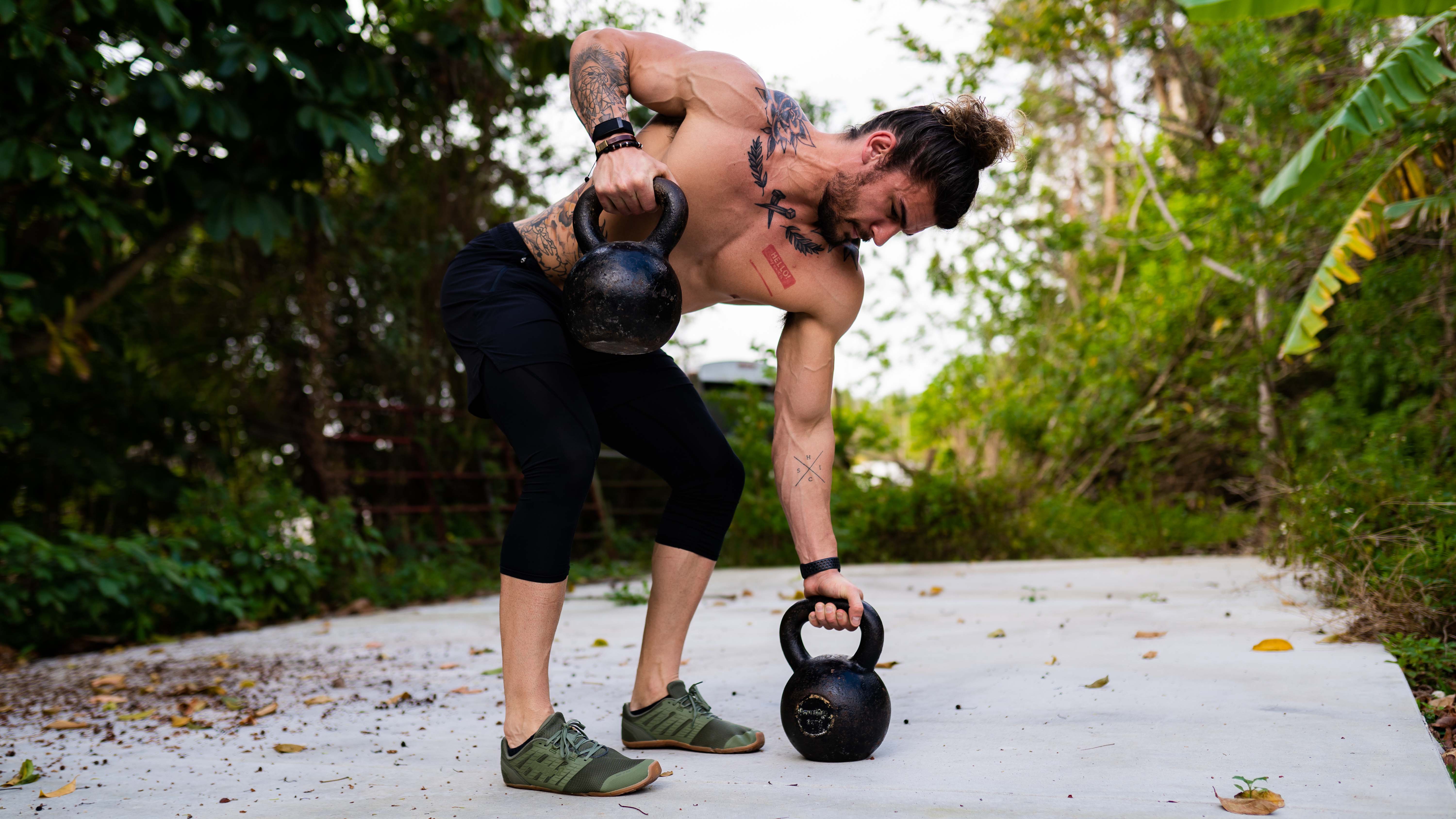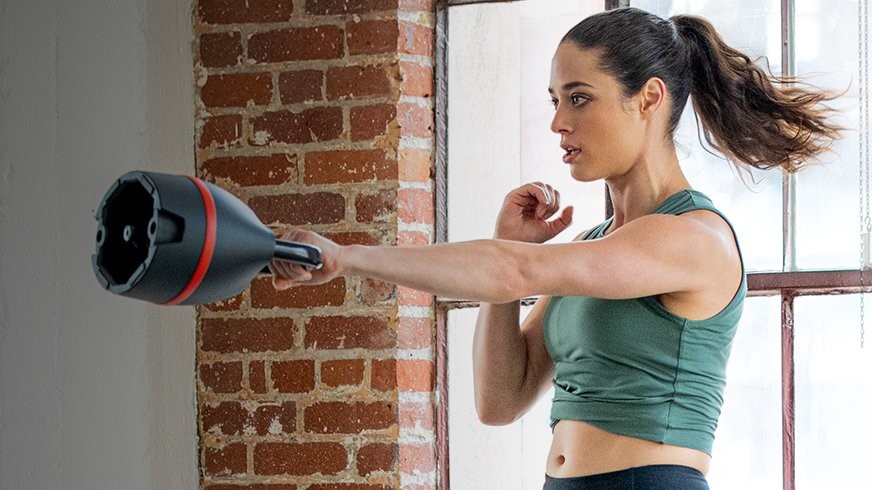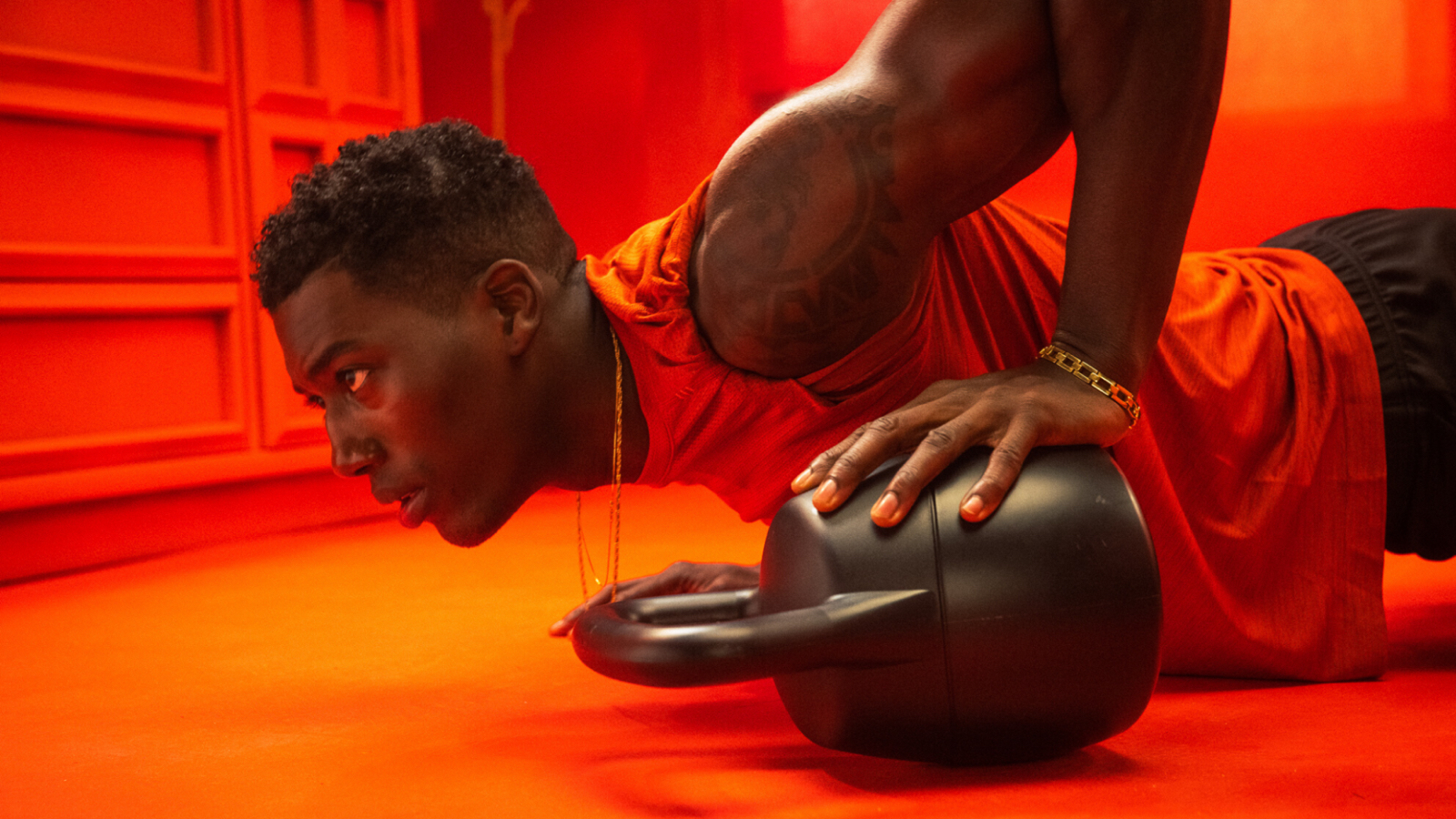Adjustable kettlebell vs cast iron kettlebell – Which is best for home gyms?
Should you get an adjustable or a cast iron kettlebell for your home gym? Which is best for home workouts? T3 weighs in on the topic


If you’re planning on getting a kettlebell for your garage or home gym, you will have to decide between buying an adjustable or a cast iron kettlebell (or kettlebells). Cast iron kettlebells are considered the ‘real thing’ as they closely follow the original Russian design, whereas the existence of adjustable kettlebells is a result of people wanting to have more flexibility in their kettlebell workouts without flooding their homes with multiple kettlebells. Which is the best kettlebell for home workouts?
Kettlebells have seen a huge surge in popularity in the last decade, especially in the US but also in other parts of the world as well. As soon as people found out that these magical iron orbs with a handle could help lose belly fat and build muscle at the same time, kettlebells started flying off the virtual shelves of fitness retailers: the lockdown only accelerated this process.
Buying a new ‘bell? Here is what you need to know.
Adjustable vs cast iron kettlebell: Price
Seemingly, cast iron kettlebells have a big advantage over adjustable kettlebells: they can be bought for dirt cheap. Lighter cast iron kettlebells are under $/£20, and for toning, they are more than adequate. Of course, the heavier you go, the more expensive they get: a 16-kilo Eleiko Training Kettlebell (UK / US) is $68/£76, and a quality 24 kg TRX Kettlebell (UK / US) will set you back as much as $139.95/£99.95.
Adjustable kettlebells are more expensive than their cast iron counterparts: the excellent Bowflex SelectTech 840 Kettlebell costs $179/£199 and the digital JAXJOX Adjustable Kettlebell Connect 2.0 $229.95/£249.99. This comparatively larger initial investment will get you not just one kettlebell, though, but a range of different weights, as both the Bowflex and the JAXJOX models replace six individual kettlebells each. Getting six individual kettlebells would cost way more, not to mention the space savings you’ll achieve by getting an adjustable kettlebell.

Adjustable vs cast iron kettlebell: Ergonomics
Talking about space saving: this is probably the biggest advantage of adjustable kettlebells. These crafty home weights look rather presentable and take up very little space, so they can be stored discretely out of sight when not in use. On the downside, the large plastic body of the adjustable kettlebells doesn’t change, so even on a lighter-weight setting, they will be rather bulky. The handle of these kettlebells is also thinner than the ones found on cast iron kettlebells.
Six cast iron kettlebells might take up more space than one adjustable kettlebell, but not everyone needs six kettlebells in the first place. Especially for toning, you’re better off getting two lighter cast iron kettlebells, and housing two smaller, coloured kettlebells are admittedly not that much of a challenge. Adjustable kettlebells are better for people who want to progress and add more resistance to their workouts as they get stronger.
Get all the latest news, reviews, deals and buying guides on gorgeous tech, home and active products from the T3 experts

Adjustable vs cast iron kettlebell: Workout performance
It can be a bit strange at first to work out with adjustable kettlebells: the weights inside do rattle a bit as you perform kettlebell swings and other dynamic exercises. They are safe, and although we have been using the Bowflex 840 for quite a while now, not at one point were we concerned about weight plates flying out of the plastic shell as we flung the kettlebell around.
As mentioned above, adjustable kettlebells are great for progression and variety. You might use a heavier setting for swings but lose some of the weight for kettlebell getups, all in one workout. Cast iron kettlebells won’t offer you this level of versatility (unless you buy all different weights separately). However, the bulkiness of the housing might put some people off as an adjustable kettlebell will always look and feel big in the hands, albeit lighter when you have fewer weight plates in the body.
Cast iron kettlebell workouts are always fun. Training kettlebells are different sizes, depending on the weight, which helps ‘get in the zone' easier: a small one will be less intense and the bigger the cast iron kettlebell gets, the more effort you have to put into flinging them. Competition kettlebells are a bit different (they are all the same size), but it’s unlikely you’ll need one of those for home use as they are more expensive than training kettlebells.

Adjustable vs cast iron kettlebell: Verdict
Which one should you get: adjustable or cast iron kettlebells? It depends on what type of training you need a kettlebell for: toning, strength training, fat burning, or a mix of all?
For lighter home workouts and toning, we recommend a smaller cast iron kettlebell (or two). No need to spend more on an adjustable kettlebell when you only use the lighter settings. That said, even more, challenging workouts, such as the 10,000 swings kettlebell challenge, can be performed with one heavy (16 or 24 kg) cast iron kettlebell.
For strength training and progression, getting an adjustable kettlebell is best, especially if you live in a smaller flat or a shared household. The Bowflex 840 has a weight range of 8-40 lbs (3.5-18 kg), while the JAXJOX Kettlebell Connect 2.0 can be adjusted between 12-42 lbs (5.5-19 kg), plenty heavy for most people working out at home. If you outgrow either of them at any point, you can add a heavier kettlebell, but that won’t happen anytime soon anyway.

Matt Kollat is a journalist and content creator who works for T3.com and its magazine counterpart as an Active Editor. His areas of expertise include wearables, drones, fitness equipment, nutrition and outdoor gear. He joined T3 in 2019. His byline appears in several publications, including Techradar and Fit&Well, and more. Matt also collaborated with other content creators (e.g. Garage Gym Reviews) and judged many awards, such as the European Specialist Sports Nutrition Alliance's ESSNawards. When he isn't working out, running or cycling, you'll find him roaming the countryside and trying out new podcasting and content creation equipment.